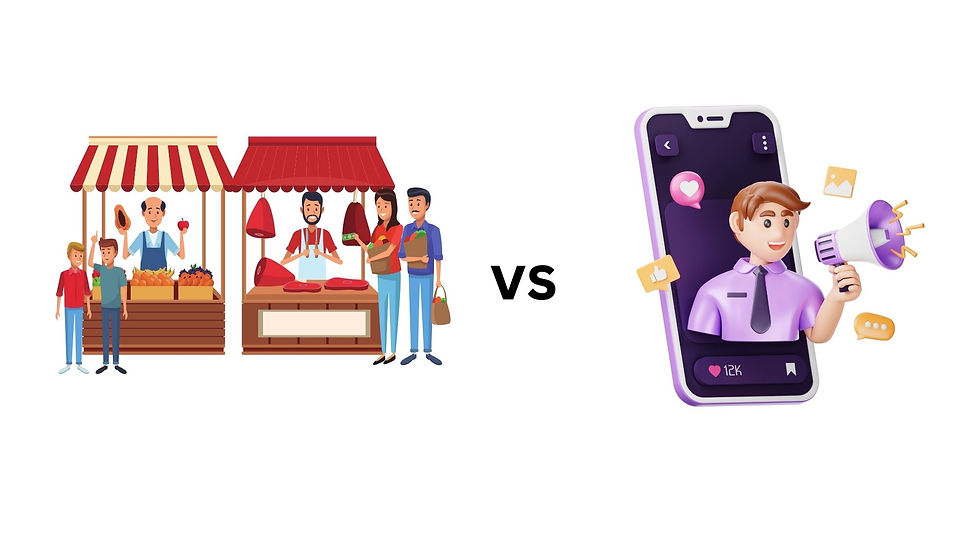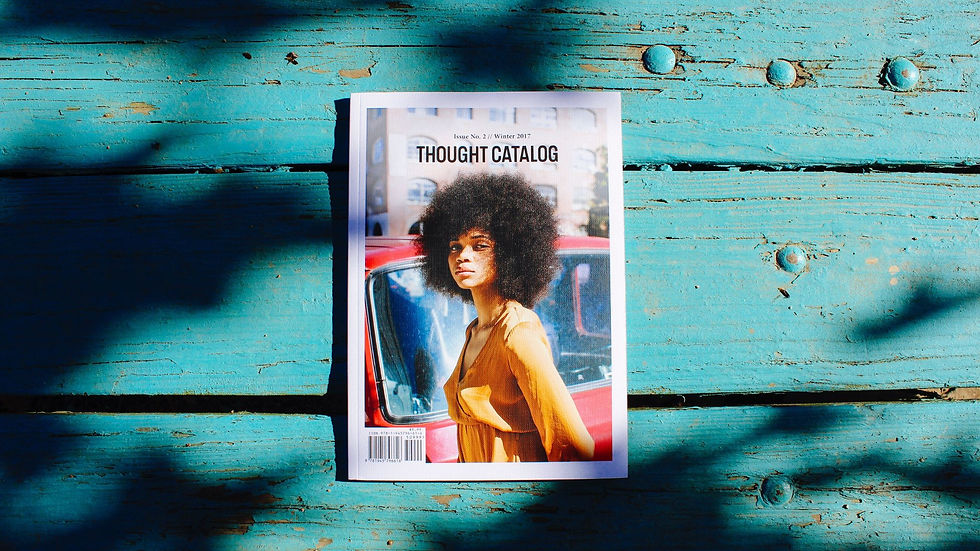Traditional vs. Digital Marketing: What’s the Difference and Which One Works Best Today?
- Juneffer Binti Sabastian Goh
- Jun 19
- 3 min read

Marketing has always been the heartbeat of any successful business. It’s how companies attract customers, build relationships, and drive sales. But over the past few decades, the marketing world has transformed dramatically. Where businesses once relied heavily on billboards, print ads, and TV commercials, many are now turning to social media, email campaigns, and influencer marketing.
This shift raises an important question: What’s the difference between traditional and digital marketing, and which one is better for your business in today’s world?
Let’s break it down.
What Is Traditional Marketing?
Traditional marketing refers to any type of marketing that isn’t online. It includes the channels and techniques that businesses have used for decades, such as:

Television and radio ads
Newspaper and magazine ads
Flyers and brochures
Billboards and posters
Direct mail (postcards, catalogs)
Telemarketing
These methods focus on reaching a broad audience, often using mass media to spread brand awareness.

What Is Digital Marketing?
Digital marketing, on the other hand, involves promoting products or services using digital channels and the internet. This includes:

Social media marketing (Facebook, Instagram, TikTok, etc.)
Email marketing
Search engine optimization (SEO)
Pay-per-click (PPC) advertising
Content marketing (blogs, videos, podcasts)
Affiliate and influencer marketing
Unlike traditional methods, digital marketing is interactive, data-driven, and often more targeted.
Traditional vs. Digital Marketing
Let’s take a closer look at how the two approaches differ across several key areas:
1. Reach and Audience Targeting
Traditional Marketing: Reaches a large and often diverse audience. For example, a TV ad might be seen by millions, but many viewers may not be your ideal customer.
Digital Marketing: Allows for precise targeting based on demographics, interests, location, and behavior. You can run ads only for people who are likely to buy.
Winner: Digital marketing for precision and personalization.
2. Cost
Traditional Marketing: Usually requires a larger budget. Printing materials, buying ad space, or airing commercials can be expensive.
Digital Marketing: Often more affordable, especially for small businesses. You can run a Facebook ad for $10 or start an email campaign for free.
Winner: Digital marketing for cost-efficiency.
3. Analytics and Measurement
Traditional Marketing: It's harder to track performance. You may not know how many people saw your billboard or heard your radio ad.
Digital Marketing: Every click, view, and conversion can be measured. You get detailed reports and insights that help improve results.
Winner: Digital marketing for real-time, detailed analytics.
4. Engagement and Interaction
Traditional Marketing: Usually one-way communication. You put your message out, and the audience receives it—but they can’t easily respond.
Digital Marketing: Two-way interaction is the norm. Customers can like, comment, share, reply, and engage directly with your brand.
Winner: Digital marketing for better audience engagement.
5. Speed and Flexibility
Traditional Marketing: Takes time to plan and execute. Designing a magazine ad or producing a TV commercial may take weeks or months.
Digital Marketing: Quick to launch and easy to adjust. You can change a social media ad or email campaign within minutes.
Winner: Digital marketing for faster results and easier updates.
6. Shelf Life
Traditional Marketing: A newspaper ad lasts a day. A radio spot plays for a few seconds. Once it’s gone, it’s gone.
Digital Marketing: Content can live online forever. Blogs, YouTube videos, and SEO-optimized pages continue to drive traffic long after they’re published.
Winner: Digital marketing for long-term impact.
Which One Should You Choose?
The truth is, it depends on your business goals and your target audience. Traditional marketing still has value, especially for local businesses or campaigns targeting older demographics. A well-placed billboard or a radio ad can still make an impact.
However, if you’re a small business with a limited budget or you want to reach a younger, tech-savvy audience, digital marketing offers more control, better targeting, and stronger return on investment.
In many cases, the best approach is a combination of both. For example, a local restaurant might use traditional flyers for nearby neighborhoods and social media ads to reach customers online.
Final Thoughts
Marketing is not one-size-fits-all. But understanding the differences between traditional and digital marketing helps you make informed decisions. As consumer behavior continues to shift toward digital platforms, it’s clear that businesses need to embrace modern strategies to stay competitive.
In the end, the most successful marketing isn’t about choosing old versus new—it’s about knowing your audience and meeting them where they are.



Comments